
Vibrant Environment
Oceans And Coasts
All | Biodiversity | Climate Change and Sustainability | Environmental Justice | Governance and Rule of Law | Land Use and Natural Resources | Oceans and Coasts | Pollution Control

If you were around in 1969, you remember it as a turbulent and chaotic time. The first astronauts landed on the moon; the Vietnam War continued, with massive protests; Hurricane Camille hit the Mississippi coast, killing 248 people; along came Woodstock, the Stonewall riots, and the Manson murders.
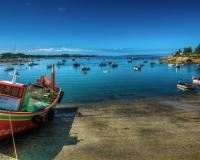
I was raised in Illa de Arousa, an island right off the coast of Galicia, in northwestern Spain. As any kid, I would spend the summers biking around the island and swimming in the sea. My sister and I would walk around the beaches collecting seashells, looking for crabs, anemones. We would see many. We would often see schools of small squid, mackerel, arroaces (dolphins), octopuses. We used to go fishing for camarons (prawns) with my grandad.
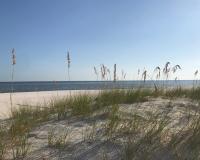
The Gulf Coast region historically is known for producing more seafood than anywhere else in the continental U.S., both in volume and dollar value. However, since Hurricane Katrina in 2005 and the Deepwater Horizon oil spill in April 2010, fishing communities along the coast who depend upon healthy and vibrant marine habitats have experienced significant financial instability.

During the 19th century’s period of rapid population growth, America’s wetlands were largely considered to be an eyesore and an obstacle to development. These were bodies of water that needed to be drained in order to make way for agriculture, buildings, and major roadways. The successive Swamp Land Acts of 1849, 1850, and 1860 turned titles of federally owned swamp and “overflowed” land over to states, who in turn agreed to drain the land to make it fit for cultivation.
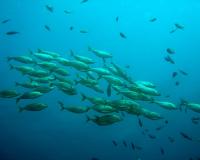
With summer in full swing and trips to the beach on our minds, the timing is perfect to consider the role of environmental law and the courts in guiding decisions with implications for the health of our oceans. This blog highlights recent updates from two major federal players with authority over what happens in the waters of the United States covering the three- to 200-mile exclusive economic zone (EEZ): the National Oceanic and Atmospheric Administration (NOAA) and the U.S. Department of the Interior (DOI).
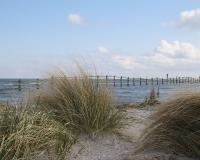
In honor of the Environmental Law Institute’s 50th Anniversary Year, each month of 2019 highlights a different key theme that represents an important aspect of our work. July is focused on environmental justice, a movement and a concept that encompasses efforts to highlight the disproportionately harmful environmental impacts experienced by vulnerable communities, as well as a commitment to ensuring justice for all people. The growing effort to identify environmental justice concerns and to develop solutions for communities closely aligns with ELI’s mission to make law work for people, places, and the planet, including through our work in the Gulf of Mexico region.
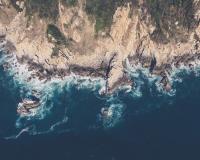
Carbon capture and storage (CCS) is a hot-button topic as a strategy to mitigate climate change and reduce greenhouse gas emissions. CCS entails capturing carbon dioxide from the atmosphere and industrial plants at the source, then injecting the captured carbon dioxide into underground geologic formations for storage. Much research has focused on sequestering carbon dioxide onshore, in depleted oil and gas reservoirs or deep saline aquifers. Offshore CCS also may be feasible, but presents several governance and legal challenges.
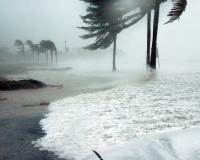
With climate change actively intensifying impacts from natural disasters, it is now more important than ever to design and implement community resilience plans and actions that will minimize damage when disasters occur. To prepare for an increasingly uncertain and fraught future, communities are identifying vulnerabilities, planning for forthcoming disasters, and taking action to become more resilient. But what exactly does resilience mean? What does it mean to be a resilient community? And, importantly, is there a concrete way to measure a community’s progress toward resilience as it is defined by the community so that its members can ensure they are taking appropriate steps to be better able to respond to a new normal?

March 16, 2019; a young whale is found washed up on a beach in the Philippines. Autopsy reveals the whale died from “gastric shock” after ingesting 40kg of plastic rubbish including plastic bags and other disposable plastic products. Three weeks later, a pregnant sperm whale is found dead on a beach in Sardinia, Italy, more than two-thirds of her stomach filled with plastic waste.
These whales are the latest casualties of a growing worldwide plastic pollution problem.
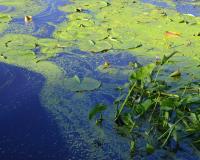
Widespread harmful algae bloom (HAB) outbreaks have profound negative impacts: threats to human health and safety, stress on ecological systems, diminished quality of life, and significant economic loss to water-based recreational and commercial activities. They occur due to decades worth of nitrogen and phosphorus nutrient runoff deposited into our freshwater lakes and water bodies. Now, excess nutrient runoff and human activity have contributed to an uncontrollable rise in HABs across the globe. This ongoing accumulation of nutrients into our shrinking freshwater supplies combined with warmer temperatures has turned these precious water bodies into petri dishes for harmful algae growth. Removing the overabundance of nutrients is essential to restoring these water bodies and preventing the growth of future HABs.